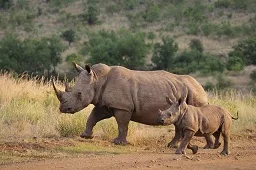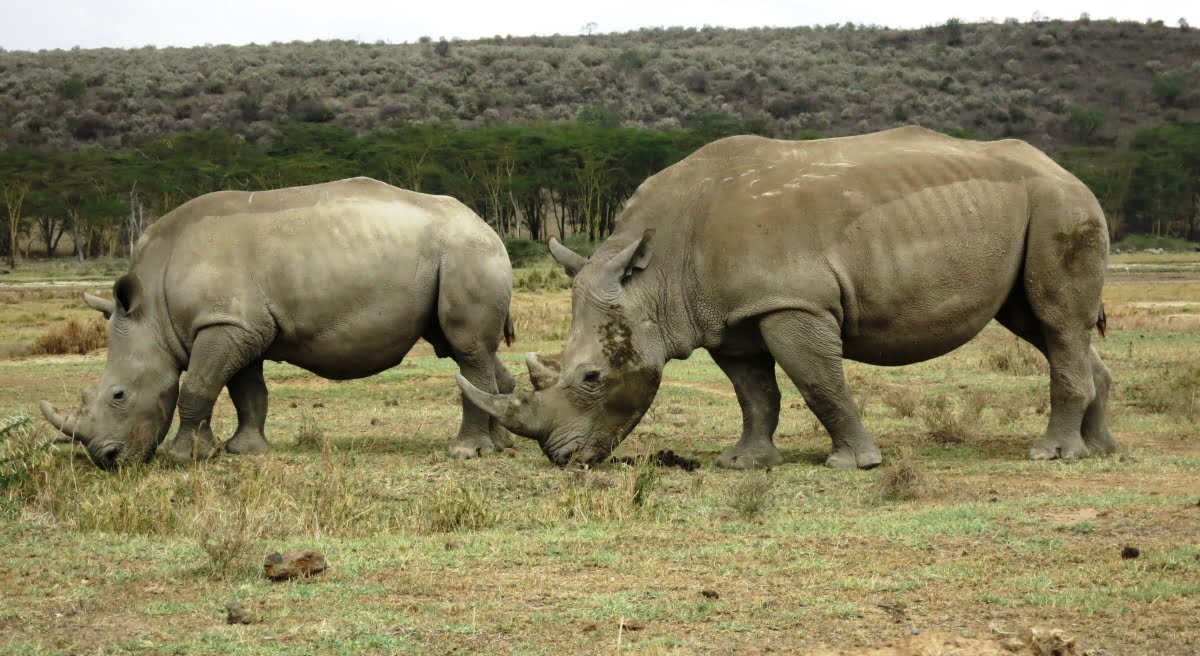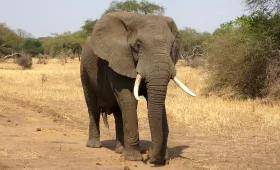There are five known species of rhinos. Two reside in Africa (white and black rhino), while three reside in Asia (summation, Javan, and one-horned rhino).
The rhinos in Africa and Asia are threatened by poachers who are after their horns which are in high demand. And if great care is not taken, the rhinos will be wiped out.
Rhinos feed on grass and can weigh up to 3500 kg, mainly white rhinos.
White and black rhinos are grey, misleading when regarded as white and black rhinos. But in the early days, people exploring meant wide for a white rhino, but to differentiate, they named white and the other black.

The greater one-horned rhinos and Javan have only one horn, while all the other 3 have two horns that keep growing like human fingernails. The horns can be as long as 150cms
Rhinos’ eyesight is very poor, but they have a great sense of smell. It is said if a rhino run after you and makes a sharp corner, it will pass straight before it makes a turn to follow the scent.
Poachers have wiped out over 10,000 rhinos in the last ten years. In Asia, there is a belief that the rhino horn has cancer medicine, making it more in demand.
In Kenya alone, an estimated 1500 rhinos are left, and growth is expected to continue as most rhino sanctuaries are protected areas.
On safari in Kenya, it will be possible to sport a rhino in many National parks and reserves, including Nairobi.
Rhino is also regarded as a big five. The safari in Kenya is among the visitor list of interest apart from the big cats and the great migration.



